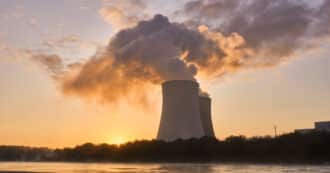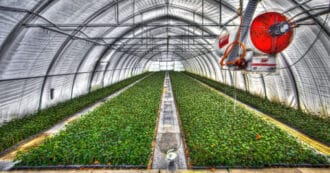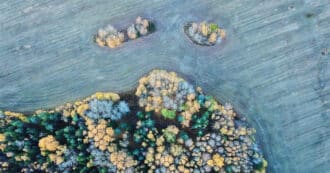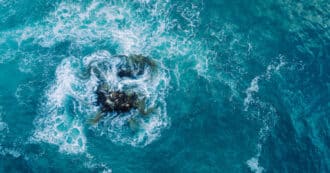By Matthew Mausner – When we speak of wind energy, we are speaking of the ability to generate power through the harnessing of wind. It’s the category of power generation from harnessing the wind. With technology that includes fans, windmills, propellers, or other forms of wind turbines, humans have discovered and invented many ways of turning the naturally flowing force of wind into usable renewable energy. Exploring wind energy pros and cons helps us better understand its potential and limitations as a renewable energy source.
What is wind energy?
Except in some very unique parts of the earth’s atmosphere, the force of air moving is inconsistent. Wind is a function of weather patterns, pressure differentials, sunlight, latitude, topography (i.e. flat land vs. mountainous terrain), and land vs. water. Thus the critical con of harnessing wind energy is, quite simply, that it is entirely dependent on how much the wind blows.
The history of wind power
There is evidence that humans have always understood and used wind in various ways, possibly going back tens of thousands of years, for uses as varied as fanning fires to sailing early rafts and canoes across the seas and oceans. Wind power to turn turbines in the familiar form of windmills dates back at least 1,000 years, all across Eurasia from China and India to the Muslim world and Christian Europe.
Often it was used to power mills for grain or to move water for irrigation. The most famous medieval use is probably the windmills in the Netherlands which removed water from ‘polder’ swamps near, or even below, sea level and created a larger amount of for land for cultivation and habitation, giving Holland its distinct character, (the ‘Low Countries’).
Wind energy pros and cons
We can take a look at some of the pros and cons of generating electricity from wind turbines. Wind energy is a relatively straightforward type of renewable energy because once it’s set up, it doesn’t require a lot of maintenance, and doesn’t pollute the air or water. It’s already a significant and growing part of the total energy footprint in many western countries, powering about 7% of the electric grid in the U.S. and 6% globally. However, this clean energy source also poses certain cons with a few specific disadvantages.
Wind Energy is a Clean Source of Power
The production of wind energy is considered “clean.” Unlike burning coal or oil, creating energy from the wind doesn’t pollute the air or require or disperse any destructive chemicals. Wind energy lessens any given country’s reliance on fossil fuels from outside nations as well, which helps a the national economy and offers a variety of other benefits as well as other ‘circular economic’ benefits. Thus, wind energy reduces the need for fossil fuel imports from other nations.
Modern Wind Energy
Wind energy in the modern sense is a renewable energy that harnesses energy generated by wind through the use of wind turbines that convert it into it into electricity. Wind is generated from the uneven heating of the atmosphere, mountains, valleys, and the planets revolution around the sun. The first windmill used specifically for electricity production was built in 1888. The way wind turbines work boils down to a process where the kinetic energy of the wind turns the blades of the turbine around a rotor, which is what creates usable electricity.
Pros and cons of wind energy
Certain renewable energies work better in different regions of the world depending on the local limitations and circumstances. Wind is a clean, renewable energy source, and is one of the most cost-effective sources for electricity. One of the disadvantages is that wind turbines can be noisy and unappealing aesthetically: some people even consider them an eyesore. Another major con, that is actually similar to solar power, is the issue that wind power is also intermittent, meaning that turbines are reliant on weather and therefore aren’t capable of generating electricity 24/7. Politicians, policymakers, and consumers should determine which works best for their part of the country.
For the Birds
Wind turbines need to be sited and operated properly to avoid, minimize, and mitigate effectively for the impacts that they can have on birds and other wildlife. Some large turbines’ powerful air flow draws in and kills birds, and the noise and distortions to natural air flow also affect bats and insects.
Wind as a Renewable Source
We call wind a renewable asset, because it does not get exhausted like other finite non-renewable assets. The expense of delivering wind energy has dropped fundamentally lately, and as the techniques become more efficient and using it becomes more popular with the general population, it will just continue to become cheaper. Depending on the materials used in building a wind energy system, it often pays for itself relatively quickly.
Meteorology
In essence, the wind is caused by a combination of rotation of the earth, heating of the atmosphere by the sun, differences in air pressure due to ocean currents and and earth’s surface irregularities, and other complex factors, yet it has become generally predictable and reliable in many locations. With our advances in sophisticated sensing equipment and algorithmic modeling of the weather, we’re getting far better at optimizing our ability to capture the wind. Thus, we should be able to use wind energy to generate power as long as the sun shines and the wind blows.
Advantages of Wind Energy
Wind energy generates electricity without polluting air or water, and without adding greenhouse gases to the atmosphere. Wind energy has some unique environmental and economic benefits as well as some cons. It is an efficient option for many different parts of the world since it doesn’t depend on direct sunlight exposure like solar energy.
Economic Advantages
Wind farms or individual turbines can be expensive to build and install because of high quality materials and composites that are needed. They should be both light and strong and optimally designed to translate the maximum functional leverage of the airflow into rotational energy. However, once built and set up, operating costs are relatively low. Wind itself is free, and the turbines don’t require too much maintenance over the course of their lifetime. Wind “farms” can be difficult to install, with upfront costs of installing and operating costs of up to $1,000 per turbine or far more for larger models. There are wind farms in carefully chosen selected locations around the world, and when those they are well chosen locations with steady wind, it’s a win-win.
By certain measures, wind energy creates far more jobs than a coal plant or than a nuclear power plant per unit of energy generated. Wind does not need to be mined or transported, in effect taking off two of the expensive costs out of long-term energy expenses. The cost of wind-generated electricity has fallen from nearly 40¢ per kWh in the early 1980s to 2.5-5¢ today, depending on wind speed and project size. The revenue from a wind farm can add a new source of property taxes income in rural areas that otherwise have a hard time attracting new industry.
Environmental Advantages
Wind turbines generally produce no emissions or pollution that would wind up in in our lakes and streams. Making the choice to use more wind energy also arguably conserves water resources: to produce the same amount of electricity with nuclear power can take about 600 times more water than wind. Other sources of electricity produce harmful emissions which contribute to global climate change, acid rain and generally the poisoning of our air, and water and soil. Wind farms are spaced spread out over a large geographic area, but their actual “footprint” covers only a small portion of land, resulting in a relatively smaller impact on crop production or livestock grazing.
Use of Modern Technology
New techniques with better materials, gearing, and efficiencies can generate ever more electricity, require less maintenance, and run more quietly and safely. Turbines are increasingly being manufactured for a wide range of sizes and customizations for farms, factories, and large private residences or estates. Portable wind turbines are also available and can power small devices on the go, such as smartphones and iPads, for example; wind and solar are sometimes fully adequate for a boat’s voyage. Cutting edge technology has transformed older standard windmills into extremely efficient energy harvesters.
Great Potential for Residential Uses
Using wind as an energy source is increasingly appealing to the residential market. People are able to generate their own electricity with wind power in the same manner as people do with the best solar panels. In addition to this, wind-powered homeowners also gain access to something called net metering. Often your home-scale wind turbines are generating more power than your house needs- and the extra energy is sent into the larger regional power network. Net metering provides credit to electricity bills for any excess power generated in a given month. You actually get paid for extra energy production, offsetting what you spend. This method can even protect from blackouts as well as fluctuating energy prices.
Biblical wind
Exodus 14:21 – “Then Moses held out his arm over the sea and the Lord drove back the sea with a strong east wind all that night and turned the sea into dry ground. The waters were split.” The book of Exodus describes a miracle, by natural means of wind, to split the Red Sea. The ‘kamikaze’ or divine wind saved the Japanese islands from a massive Mongol invasion. Those are extreme cases, but from the perspective of spirituality, God has placed in creation this amazing resource, insubstantial yet incontestably real, which almost miraculously, we can be used to power our lives without the need for ‘revealed miracles’.
Wind energy is in many ways the simplest and cleanest of all the renewable energies. In a way, the golden age of wind energy was hundreds of years ago when wind was virtually the only power source to transport goods and services around the world via sailing ships. Scientists published a 2017 study and environmental roadmap on how most countries in the world could transition to 100% wind, water, and solar energy by 2050. Perhaps as our society today becomes more and more sustainable, we can sail more and more in that direction.
* Featured image source








